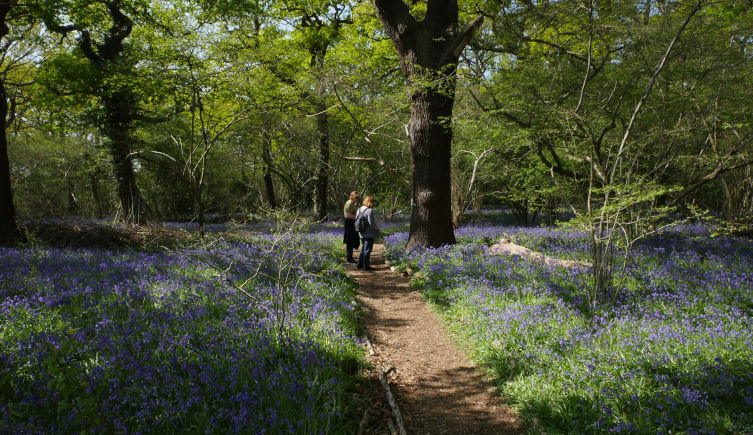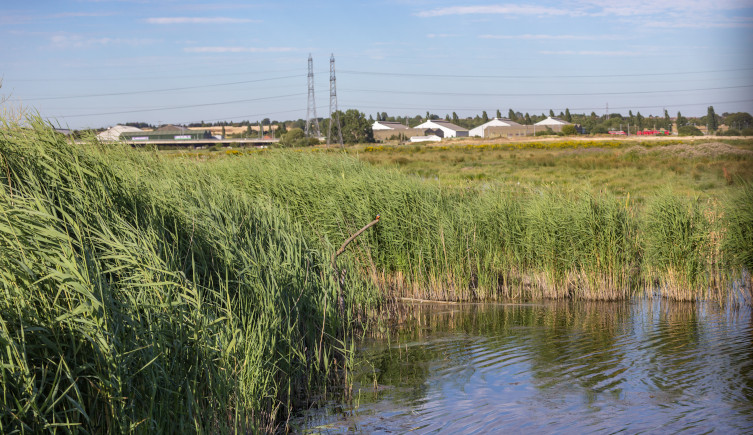Beavers, bees and bats are among the species set to benefit from new rewilding schemes in London.
The projects will share hundreds of thousands of pounds to help bring back nature in the UK's capital city.

The beavers are only the second pair introduced to London in the past four centuries. Image © Robert Adami/Shutterstock
Beavers, bees and bats are among the species set to benefit from new rewilding schemes in London.
The projects will share hundreds of thousands of pounds to help bring back nature in the UK's capital city.
Beavers have been reintroduced in west London as part of efforts to restore London's lost ecosystems.
A family of five beavers is now living in Paradise Fields, Ealing, as part of a project between the local council and wildlife groups. The mammals will now be studied in their new environment to see the impacts they have on the water, flood risk and biodiversity of their environment.
It follows a landmark reintroduction scheme in Enfield last year, which brought beavers back to London for the first time in 400 years. These beavers have now been joined by a baby kit after successfully breeding, another first in recent centuries for the UK's capital city.
The project will share in £850,000 of funding from the Rewild London Fund, which is funding a number of organisations to help boost biodiversity, restore habitat and reintroduce species.
Sadiq Khan, the Mayor of London, says, 'I am delighted to welcome back beavers to west London for the first time in 400 years, with the support of my Rewild London Fund.'
'We are now facing dual climate and ecological emergencies worldwide, which further threaten our ability to survive on our planet. Despite the harm inflicted on the natural world, we have the power to make amends, and I am committed to ensuring that London is at the vanguard of efforts to reverse the trends of declining biodiversity and the destruction of nature.'
'Rewilding allows nature to take the lead and is an exciting way to create healthier ecosystems and allow humans and wildlife to live together more harmoniously.'
Applications for the latest round of the Rewild London Fund is open for applications until noon on the 27th November. You can find out more about how to get involved here.

A scheme to establish wildlife corridors from Perivale Wood is aimed at boosting harvest mice populations. Image © Mike Watts, licensed under CC BY-SA 2.0 via Flickr.
In total, 22 rewilding projects across London benefitted from the last round of funding. While some projects cover specific areas or boroughs, others cover a much larger area.
For instance, a project led by the Zoological Society of London received a grant to build knowledge about water voles across the entire capital. These mammals are in rapid decline following habitat loss along riverbanks and predation by the invasive American mink.
The project hopes to find out where voles continue to live in London, and begin developing ways to tackle the threats which face them.
Projects looking at other mammals also received funding. Bats are set to benefit from the restoration of woodland alongside the railway between New Cross Gate and Brockley, while new wildlife corridors are being set up between Perivale Wood and Horsenden Hill in west London to allow harvest mice to spread between the sites.
Corridors are also being established in Thamesmead for pollinators such as the shrill carder bumblebee, one of the rarest bees in the UK. A range of different spaces, including school grounds, community gardens and even balconies will be enhanced to provide nectar plants the pollinators can feed on.
Projects taking place in Wimbledon Common, King’s Oak and Barnes Common, meanwhile, will benefit wetlands. In the latter, a section of Beverley Brook is being restored to a more natural, meandering state to allow a range of niches for species to live above and below the water.

The Thames marshes in Greater London's southeast are one of the possible pilot rewilding sites. Image © jean.cuomo/Shutterstock
Alongside the funding announcement, the London Rewilding Taskforce also released their final report. The group, which includes Museum biodiversity expert Dr John Tweddle, made eight main recommendations of how the capital's biodiversity can be boosted, which can also be applied to other cities.
As part of their work, they identified a number of rewilding opportunity zones where habitat restoration and species reintroductions can take place on a large scale. While the areas of land didn't have to be in one block, they had to have few barriers to allow species to spread within them.
Using these criteria, the taskforce whittled the number of potential zones down to 11, including areas such as the Colne Valley, Enfield Chase and the Thames marshes. All of the potential sites are found on the edges of Greater London, where it is hoped they will link up with projects taking place in other counties.
While only one of the sites will progress to become a pilot scheme for now, the taskforce recommended that the others were included in London's local nature recovery strategy so that they may be rewilded in the future.
The report also recommended work to get local people more involved in rewilding their own area, as well as support for smaller projects that can provide vital stepping stones for wildlife between larger green spaces.
The Museum's gardens will be one such site when work to transform them into a biodiverse home for nature is completed in 2024.

Find out about the plants and animals that make the UK home.
Don't miss a thing
Receive email updates about our news, science, exhibitions, events, products, services and fundraising activities. We may occasionally include third-party content from our corporate partners and other museums. We will not share your personal details with these third parties. You must be over the age of 13. Privacy notice.
Follow us on social media